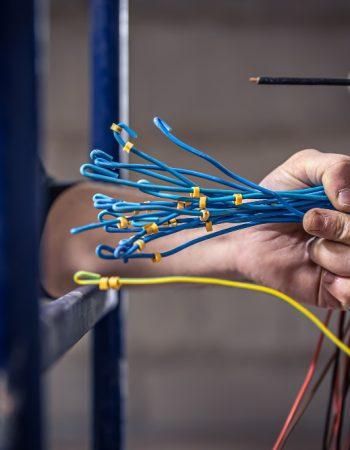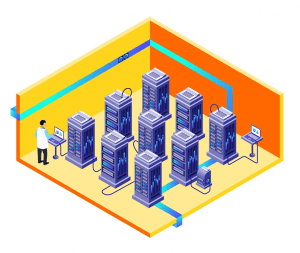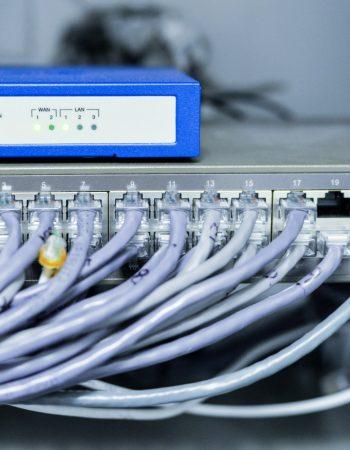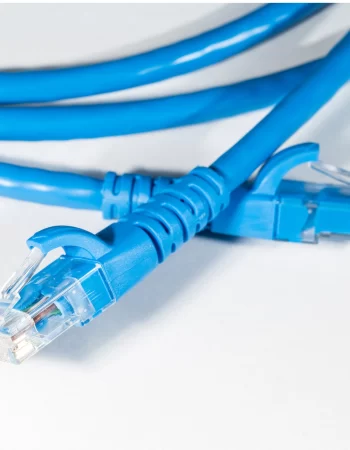The data center of the future is needed now and added to rising growth in a world that is increasingly online and 5G is driving greater demand for data speed and volume.
Building for scalability is the key, those elements that create data center efficiency now lay the groundwork for your ability to respond well in the future. Cable management is a large part of that picture and developing agile management plans is just as important, if not more so than the rest of your data center architecture.
Efficient cable management is crucial for maximizing data center performance and scalability. As technology advances and data demands increase, data center operators must continually optimize their cabling infrastructure to meet these challenges. In this blog, we will explore four key cable improvements that can significantly improve data center efficiency and scalability that ensure smooth operations and future growth.
Importance of Cable Management
Effective cable management allows technicians to simply unplug and plug in cables that are necessary for the action they are taking. Effective airflows prevent overheating, fire disasters, and even cable breakage that can cause series issues. Although other methods exist for the transmission of power and data, no other method is as efficient or cost-effective as using a cable. Cables that are too long and disorganized can also quite simply be a tripping hazard, increasing the risk of workplace injuries. Managing cables or wires helps to maintain basic functionality and protects the devices from clogged airflow due to messy and disorganized cables. Tangled wires or cables are generally frustrating and time-consuming to untangle.
Building Data Center Efficiency
When we talk about scalability in data centers, we are actually talking about two different things. The first is the physical layer, which includes new data servers, switches, storage devices, and cable management. By optimizing server rack space and ensuring effective network cabling management, efficiency, and uptime can be improved as well as reducing the footprint required for server hardware and lowering the equipment costs.
For peak data center efficiency, you need to be dense, fast (the right cabling), and cost-effective. This includes 40G to 100G and eventually the emerging 400G ethernet capability. It not only means more fiber cable, but an increased number of connections. The cable infrastructure that supports increasing data rates and volume, allows businesses to get competitive advantages by providing more efficient and reliable services to their customers.
4 Cable Improvements Approaches
1. High-Density Fiber Optic Cabling
High-density fiber optic cabling revolutionizes data transmission capabilities within data centers. With its superior bandwidth and faster data transfer rates compared to copper cabling, fiber optical technology meets the rising demand for high-speed connectivity. By espousing fiber optical cabling, data centers can seamlessly accommodate the surging data volumes current in the moment’s digital landscape. However, the physical attributes of fiber optical cables, similar to their reduced size and weight, offer enhanced inflexibility in cable operation, enabling data center drivers to achieve higher-density configurations while optimizing space application. Bandwidth is essential for compatibility, scalability, and further effectiveness, there’s no need to change the entire network at formerly, so changes can be made incrementally as the requirements of the data center change.
2. Modular Cable Management Systems
Modular cable management systems represent a paradigm shift in traditional cable organization methodologies. Unlike conventional solutions, which frequently involve weak installation processes and limited scalability, modular systems empower data center drivers with unknown inflexibility and effectiveness. By using modular factors similar to servers, channels, and courses, data centers can conform their cable structure to accurate specifications, easing flawless expansion and adaption to evolving connectivity conditions.
With modular string operation systems, data centers can tailor, and streamline installation procedures, and maintain agility in responding to dynamic functional demands. Structured cable solution systems also need to help regulate air flow, ensure devices are easily accessible, and allow for cable identification and tracking.
3. Automated Cable Testing Monitoring
Automated cable testing and monitoring systems represent a crucial innovation in maintaining data center reliability and performance. By implementing advanced technologies like time-domain reflectometry and optical time-domain reflectometry, these solutions allow businesses to swift identification and diagnose cable faults swiftly. Field testing with a portable indenter system and electrical tests are then performed to assess the health and remaining life of cables. Through real-time analysis of cable integrity, these systems preemptively detect potential issues such as breaks, bends, or signal degradation. By automating the testing and monitoring processes, data centers can proactively address cable-related problems, thereby minimizing downtime and optimizing network efficiency.
4. Cable Labeling and Documentation
Effective cable labeling and documentation practices are indispensable for efficient cable management within data centers. Through clear and standardized cable labeling, coupled with comprehensive documentation of connections and configurations, data center operators streamline troubleshooting, maintenance, and future expansion endeavors.
Leveraging advanced labeling techniques like color-coding, barcoding, and digital asset management systems enables swift identification of cables and accurate tracking of their routing. By implementing strong cable labeling and documentation protocols, data centers maintain operational efficiency, navigate human errors, and ensure compliance with industry standards and regulations. This documentation also helps identify and resolve any issues that may arise in the future, reducing downtime and improving overall efficiency.
Conclusion
In today’s transforming digital era, data center efficiency and scalability are essential for meeting the changing and growing demands of modern computing environments. By implementing these four cable improvements, high-density fiber optic cabling, and modular cable management systems. Additionally, with automatic cable testing and monitoring and cable labeling and documentation, data center operators can improve their infrastructure’s performance, reliability, and flexibility. With a focus on optimizing cable management practices, data centers can effectively support the increasing data burdens as well as upgrade the technology requirements of tomorrow.
Ready to optimize your data center cabling for peak performance and reliability, look no further than Porter Tech. Our experts will work closely with you to understand your specific requirements and provide effective solutions to enhance your data center’s efficiency and build scalability.






